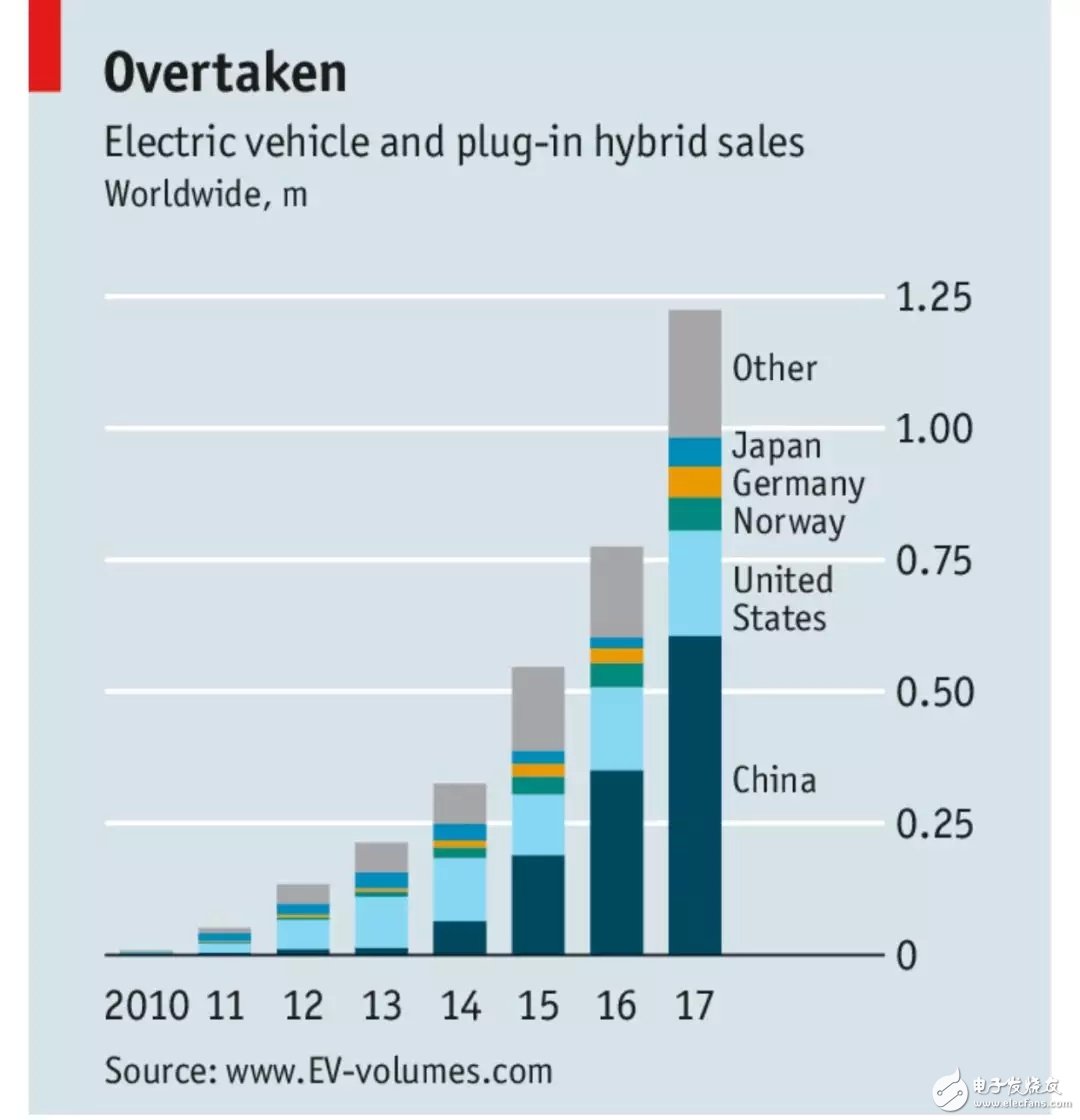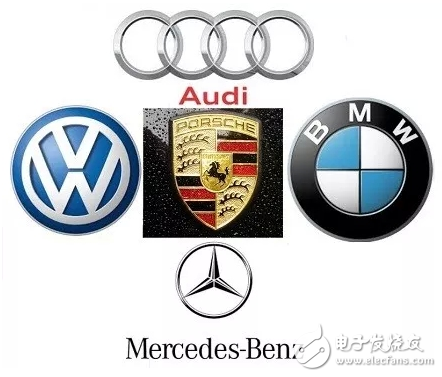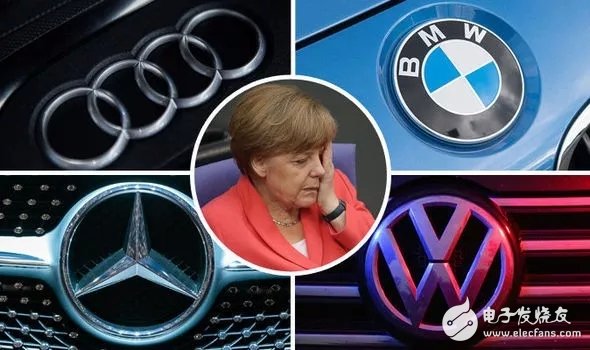German carmakers have many similarities with the “confident roadblocks†that like their products.
The cars they produce are the dominant force in the high-end market in the world's automotive market, with a streamlined design, a satisfying slamming when closing the doors, and a spacious interior that “decorates†leather and technology.
In Germany, cars are also the engine of the economy; the automobile industry is currently the largest industrial sector in Germany.
But cars are undergoing change.
Electric drive and autopilot technology will revolutionize the way they are used. The difficulties in adapting to the new technological environment not only threaten the future income and profits of Daimler, BMW and Volkswagen, but also threaten the status of being a national economic machine in the world.
Of course, they are still in the lead. These brands, built with unparalleled quality, mean that four-fifths of the world's premium cars have the German logo.
BMW and Daimler's Mercedes-Benz produce more than 2.2 million cars a year; Volkswagen and Toyota and Renault-Niesson-Mitsubishi form the world's largest car manufacturer. The company produces about 10 million cars a year, but the 2 million Audis and Porsche sold will help them get 65% of their profits.
The three companies produced more than 15 million vehicles in 2016, accounting for about one-fifth of the world's total vehicle production.
“We are still the best car producer in the world,†said Matthias Machnig, Deputy Minister of Economics of Germany.
However, there are three major problems in this industry.
The first is the issue of public trust.
After the 2015 emissions scandal, Volkswagen admitted to installing software for cheating in the exhaust emissions test on the car, and was accused last year for the "diesel discharge door incident." These scandals have damaged the reputation of automakers and their political support.
On February 27th, the federal court in Leipzig stated that the German authorities in Stuttgart and Düsseldorf could ban the entry of diesel vehicles. This ruling affects 70 cities in Germany, and the seriousness of the problem can be seen.
The European ban on the ban on polluting cars seems to be getting closer and closer, and anti-diesel sentiment is spreading to other cities outside Germany, such as Paris and London, which are in the process of imposing a ban.
Secondly, in the design and sale of electric vehicles, the German automotive industry is very backward, and consumers are increasingly inclined to drive electric vehicles.
The Germans who are considered to be innovators in the automotive industry do not have a leading edge in electric vehicles. Instead, its mass market competitor Renault-Niessen-Mitsubishi Motors produced Nissan Leaf, the world's best-selling electric car. Since its launch in 2010, sales have reached 300,000 units.
At the same time, Chinese automakers have already distanced themselves (see chart).

2010-2017, sales of electric vehicles and plug-in hybrid vehicles in China, the United States, Japan, Europe and other countries
Third, the complex mechanical equipment that engineers in this country are good at is gradually turning into a battery-powered on-board computer that can achieve automatic driving.
Clearly, superior mechanical engineering has become the foundation of the industry, but there is no guarantee that it will play a leading role in the most important aspects of the future in electronic engineering and information technology data processing capabilities.
Matthias Wissmann, president of the German Automobile Industry Association, acknowledges that these developments mean that members of the association face a “very challenging momentâ€.

The tire tread of the car manufacturer left Germany with a deep impression on people.
Cars are national brand advertisements worldwide, and “Made in Germany†has become a guarantee of cutting-edge engineering technology. This has greatly promoted the export of industrial equipment in Germany, and also benefited many high-profit products from small and medium-sized enterprises in Germany.
In 2016 alone, Germany produced cars worth 256 billion euros ($283 billion), of which four-fifths were exported abroad.
At the same time, the automotive industry employs approximately 800,000 people directly or indirectly by suppliers. These positions are considered to be good jobs – high salaries and good benefits (some companies may directly reward the company's cars).
Part of the reason for the success of the industry is that the growth of the high-end market far exceeds the overall automotive market.
As drivers become more and more wealthy, they tend to change to a better car, so the savvy Germans also expand the production of luxury cars.
They once specialized in the high-margin sub-sector of "luxury car". But about 10 years ago, they were involved in smaller, cheaper car markets, such as the BMW 1 Series or Mercedes-Benz A-Class.
In this way, it is natural to attract a group of customers who dream of owning a prestigious German car from the mass market.
Therefore, for a long time, the scale and strong brand made the competitors discouraged.
Even though Toyota's Lexus and Jaguar Land Rover have launched the most successful challenges in this market, they still occupy a small share.
Jaguar Land Rover is a British-based Indian company. Interestingly, it is run by a former BMW executive.
In 2017, Lexus and Jaguar Land Rover sold more than 670,000 units and 610,000 units respectively. But the high-end brands of other automakers don't even have such big sales. Only Tesla's electric car made the Germans sleep all night.
According to the Munich Institute for Economic Research (IFO), automakers account for 13% of Germany's industrial output, and the car is the source of technological innovation in the country.
In 2016, the automotive industry spent nearly 22 billion euros on research and development, more than one-third of Germany's total R&D spending. The service automobile industry is an important part of the work of industrial giants such as Bosch and Siemens.
German, car manufacturer's corporate living area
This economic strength often in turn brings a lot of political influence to automakers.
The Christian Democracy Coalition is strongly supported by car companies, while the Social Democrats are supported by the Big Three trade alliance. The head of many car manufacturers, Baden-Württemberg (Baden-Württemberg), whose leader Winfried Kretschmann came from the Green Party.
Therefore, he also defended the long-term production of diesel vehicles by auto companies.
Critics complain that the free movement of people between management and managed companies has convinced car manufacturers that they can waive the consequences of their bad behavior. The most recent German president, former prime minister and current deputy prime minister have served on the public board of directors.
Eckart von Klaeden was a senior official of the Christian Democratic Union and became the lead lobbyist for Daimler in Berlin in 2013. Wismann (Wiesman) is the owner of the German car lobbying group. He also held senior positions in the CDU and served as the Minister of Transportation in the 1990s. These are just the tip of the iceberg.
These connections bring a superficial advantage.
There is a proverb in Germany called: "Free citizens can drive for free." Bosses and politicians travel between cities without a speed limit. Germans do not pay road taxes. Compared with gasoline, the tax policy makes diesel prices much lower, prompting consumers to prefer large cars that rely on diesel engines to meet emission regulations.
Other tax regulations are also encouraging companies to provide premium car and fuel subsidies to their employees.
The current German Prime Minister Angela Merkel (Merkel) has been very happy to help car manufacturers. She urged the EU to block an agreement on strengthening carbon dioxide emissions management in 2013 (although diesel emits less carbon dioxide than gasoline, Germany's large cars are still large emitters).
German politicians have lobbied the European Commission to ease the severity of its latest emissions rules (which began in 2020) announced in November. As Lutz Meier, a Berlin-based car journalist, said, cars and policies that benefit them are significant in determining our national spirit.

However, consumers, especially younger consumers, are increasingly skeptical about diesel-powered vehicles.
Germany's diesel sales share fell from 48% in 2012 to 33% this year and is also plummeting in other parts of Europe.
In contrast, German car companies rely heavily on diesel sales in Europe; they account for one-third of Daimler and BMW's global sales, and a quarter of Volkswagen.
Therefore, if German cities implement a ban on driving diesel cars as a response to evidence that car pollution threatens the health of residents, then this could become “the Fukushima moment in the automotive industryâ€, a Berlin think tank focused on energy and transportation. ChrisTIan Hochfeld of Agora thinks so.
The “Fukushima Moments†here refers to the precedent of the collapse of the German nuclear business after the Japanese nuclear disaster in 2011.
He also pointed out that the resale value of diesel vehicles is declining. If, as many people now demand, automakers undertake the obligation to modify diesel vehicles to reduce nitrogen oxide emissions, the cost alone will be high. Billions of euros.
In fact, politicians' love for the auto industry may be diminishing.
Prime Minister Merkel told the bosses of major domestic auto companies in September that the recent scandal "destroyed a lot of trust." Last November, she warned the industry that they needed to respond to public concerns, and time was running out.
At the same time, political opponents are increasingly determined to support the ban (the Green Party of the Parliament proposes to scrap the national gasoline and diesel cars by 2030), and even Merkel's ruling party is adjusting its position on diesel.
Last week, a junior minister suggested that in order to reduce the worst of urban haze, some temporary restrictions may be introduced.
Political support over the past few years has helped the industry in the short term, but it is widely believed that this has fueled complacency and led to the backward position of German manufacturers in the electric car race.
If it can motivate companies to take quicker action in response to changes in consumer tastes, the production of electric or cleaner vehicles, and the ever-changing overseas demand, it may be beneficial to get a cold reception from the government.
But automakers are worried that they are losing support, and if these regulatory incentives that drive consumers to continue buying luxury cars in Germany have changed, it could have a huge negative impact on the industry.
Yuhai piezo materials include : hard piezo material, soft piezo material and lead free piezo material
Soft piezo material exhibits: larger piezoelectric constants, higher permittivity, larger dielectric constants, higher dielectric losses, larger electromechanical coupling factors, low mechanical quality factors, a lower coercive field, poor linearity, and is easier to depolarize. The ideal application of soft piezo materials is sensing needs. Yuhai soft pizeo materials are PZT-5, PZT-5H, PSnN-5 and PLiS-51.
Hard piezo material exhibits: smaller piezoelectric constants, lower permittivity, smaller dielectric constants, lower dielectric losses, smaller electromechanical coupling factors, high mechanical quality factors, a higher coercive field, better linearity, and is harder to depolarize. The ideal application of hard piezo materials is high power transducer needs. Yuhai hard pizeo materials are PZT-4, PZT-8, PCrN-4 and PBaS-4.
Yuhai company developped lead free piezo material BaTiO3 and apply for the Chinese Patent in 2011, to meet the needs of environmental protection in today's society.
Piezoelectric ceramic material
Properties and Classification
General description of material properties
Material Code
Properties
Application
Soft PZT ceramic
PZT-51
Characteristics:
larger piezoelectric constants, higher permittivity, larger dielectric
constants, higher dielectric losses, larger electromechanical coupling
factors, low mechanical quality factors, a lower coercive field, poor
linearity, and is easier to depolarize.
low-power ultrasonic transducers
PZT-52
low-frequency sound transducers
PZT-53
applications with high g coefficient, for example,
PZT-5H
microphones,vibration pickups with preamplifier
PLiS-51
low-frequency vibration measurements
PMgN-51
Hydrophones, transducers in medical diagnostics
PSnN-5
Actuators
Hard PZT ceramic
PZT-41
Characteristics: smaller
piezoelectric constants, lower permittivity, smaller dielectric
constants, lower dielectric losses, smaller electromechanical coupling
factors, high mechanical quality factors, a higher coercive field,
better linearity, and is harder to depolarize.
PZT-42
High-power acoustic applications
PZT-43
Hydroacoustics, sonar technology
PZT-82
piezomotor
PCrN-4
PBaS-4
Lead free piezo ceramic
BaTiO3
Characteristics: Low density, low curie temperature, lead free.
Ultrasonic transducers suitable for low-temperature underwater, for example ultrasonic transducer in fishfinder
Piezoelectric Material,Piezo Ceramic Element,Piezo Electric Cylinder ,Piezo Sphere
Zibo Yuhai Electronic Ceramic Co., Ltd. , https://www.yhpiezo.com